Published on: 2025-11-09

This preview, captured by the Sentinel-2 satellite from its orbit at approximately 786 km above Earth, shows the Singapore-region Imagery observed on 2025-10-26.
This month's environmental digest for the Singapore region uses Sentinel-2 satellite data to assess vegetation health via NDVI (Normalized Difference Vegetation Index) and built-up intensity through NDBI (Normalized Difference Built-up Index). Only images with cloud cover below 50% are considered, ensuring reliable data. This monthly analysis, sourced from the Microsoft Planetary Computer, reveals a region where vegetation slightly edges out built-up surfaces, as indicated by the NDVI and NDBI contrast.
Info Box for Awareness
Why this matters
At I Hug Trees we turn science into awareness so that we understand how humanity's effort and nature's wonders shape the living balance of our green spaces. The green patches around the globe vanish and recover telling us a story of resilience and renewal. Is it not? As we aim to bring scientific credibility into our numbers and maps we help everyone see what connects us all.
Understanding NDVI and NDBI
Satellites like Sentinel-2 capture sunlight reflected from the Earth in many narrow colour ranges, called spectral bands. Plants and trees reflect more light in the near-infrared band and absorb more in the red band, that's how NDVI helps us see how green or healthy an area is. NDBI uses other bands to highlight built-up areas, showing how vegetation and development change side by side. Together, they help us understand the story of our landscapes, where green spaces thrive and where it needs care.
Methodology
NDVI (Normalized Difference Vegetation Index) values were derived from Sentinel-2 imagery using red (B04) and near-infrared (B08) bands. Cloud masks were applied using QA60 flags. Images were processed at 10 m resolution through the Microsoft Planetary Computer API. Monthly NDVI averages are compared over time to assess vegetation trends and greenness changes.
Note: Some summary insights in this analysis were generated with the help of AI tools. All satellite data and numerical outputs are based on verified Sentinel-2 observations.
Data integrity & processing note
All datasets are processed using open satellite imagery from the Microsoft Planetary Computer and verified with consistent parameters such as cloud cover, resolution, and band alignment. Each NDVI and NDBI image is generated using reproducible Python workflows to maintain scientific credibility. Data processing and map generation were performed using AWS cloud infrastructure.
NDVI & NDBI Historical Trends — Singapore-region
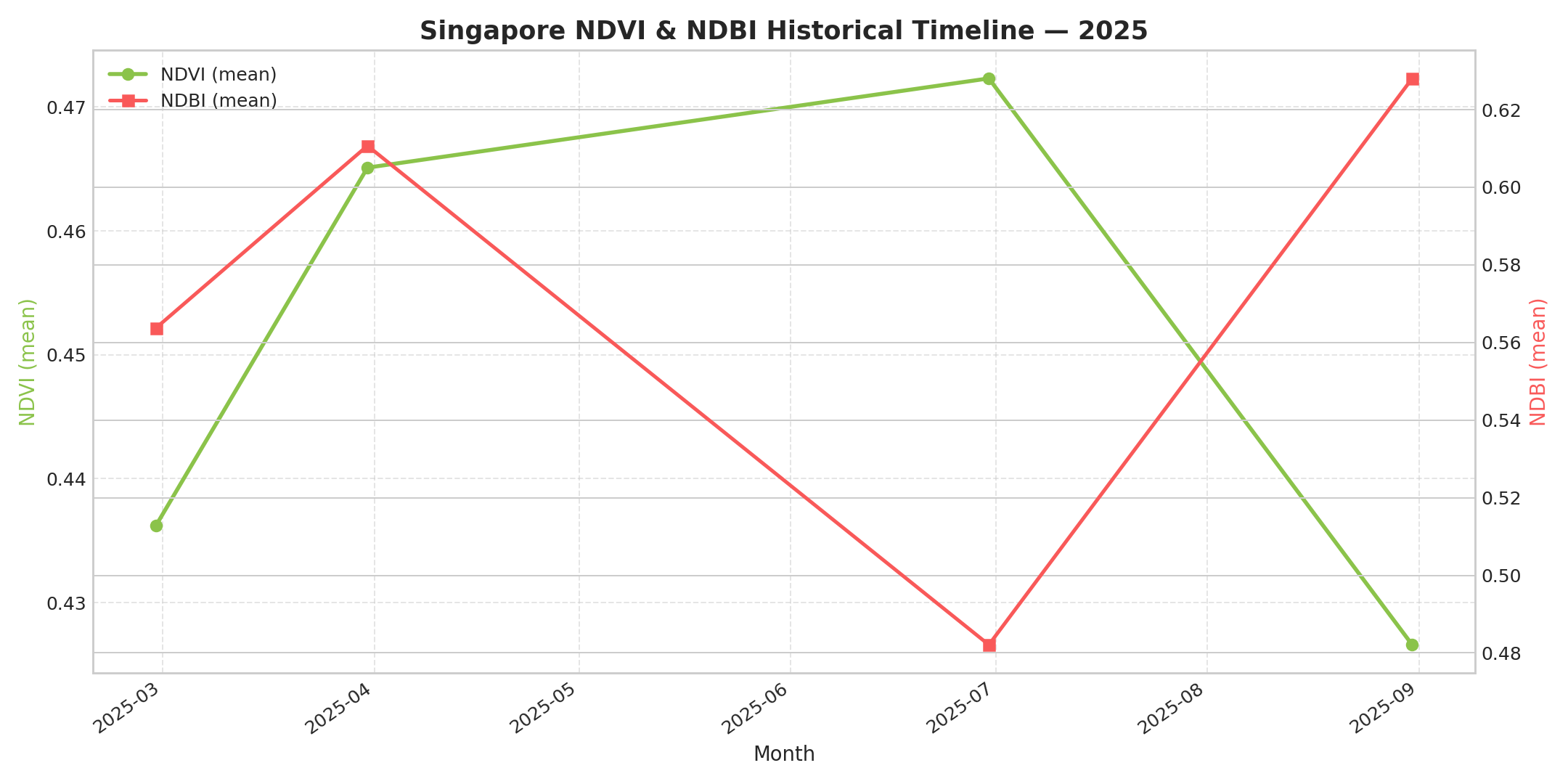
This graph shows monthly NDVI and NDBI values, capturing how vegetation and built-up areas changed across the Singapore-region throughout the year.
NDVI
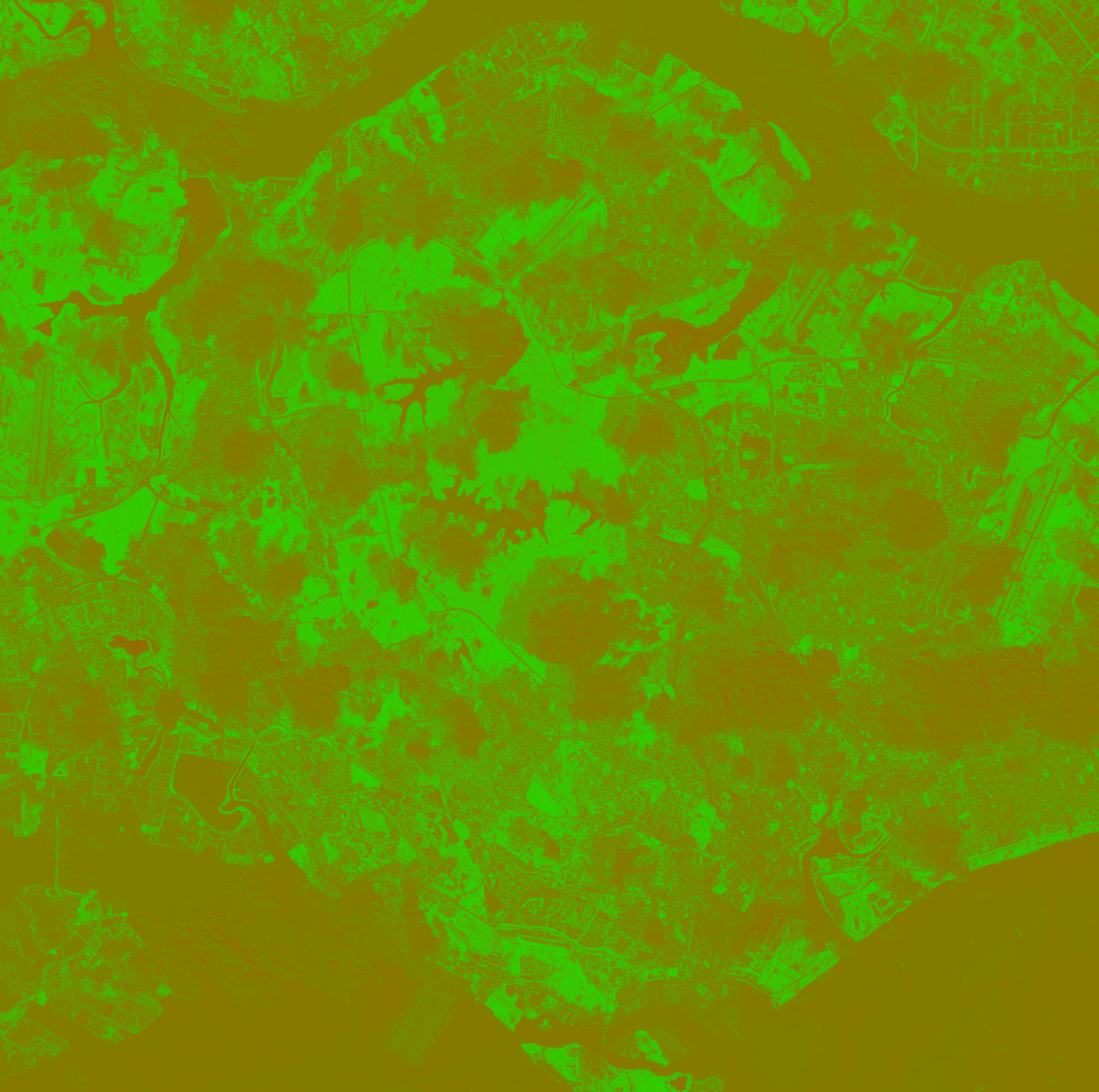
NDVI — color visualization

NDVI — greyscale (index values)
NDVI CSV Values
| min | max | mean | median | stddev |
|---|---|---|---|---|
| -0.43319404125213623 | 0.6985166072845459 | 0.1524716168642044 | 0.08708053827285767 | 0.18959499895572662 |
NDBI (Built-up Index)
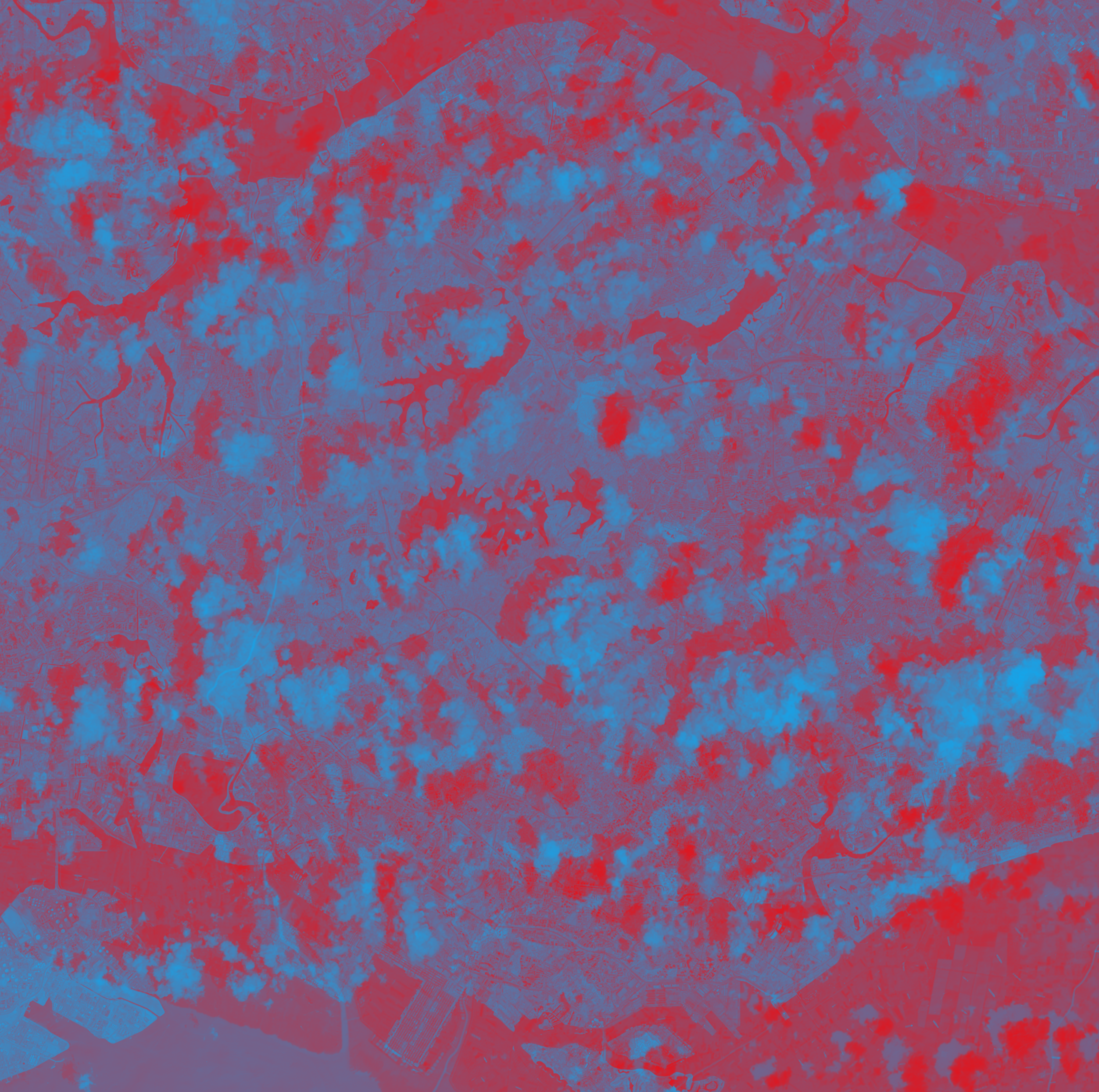
NDBI — color visualization
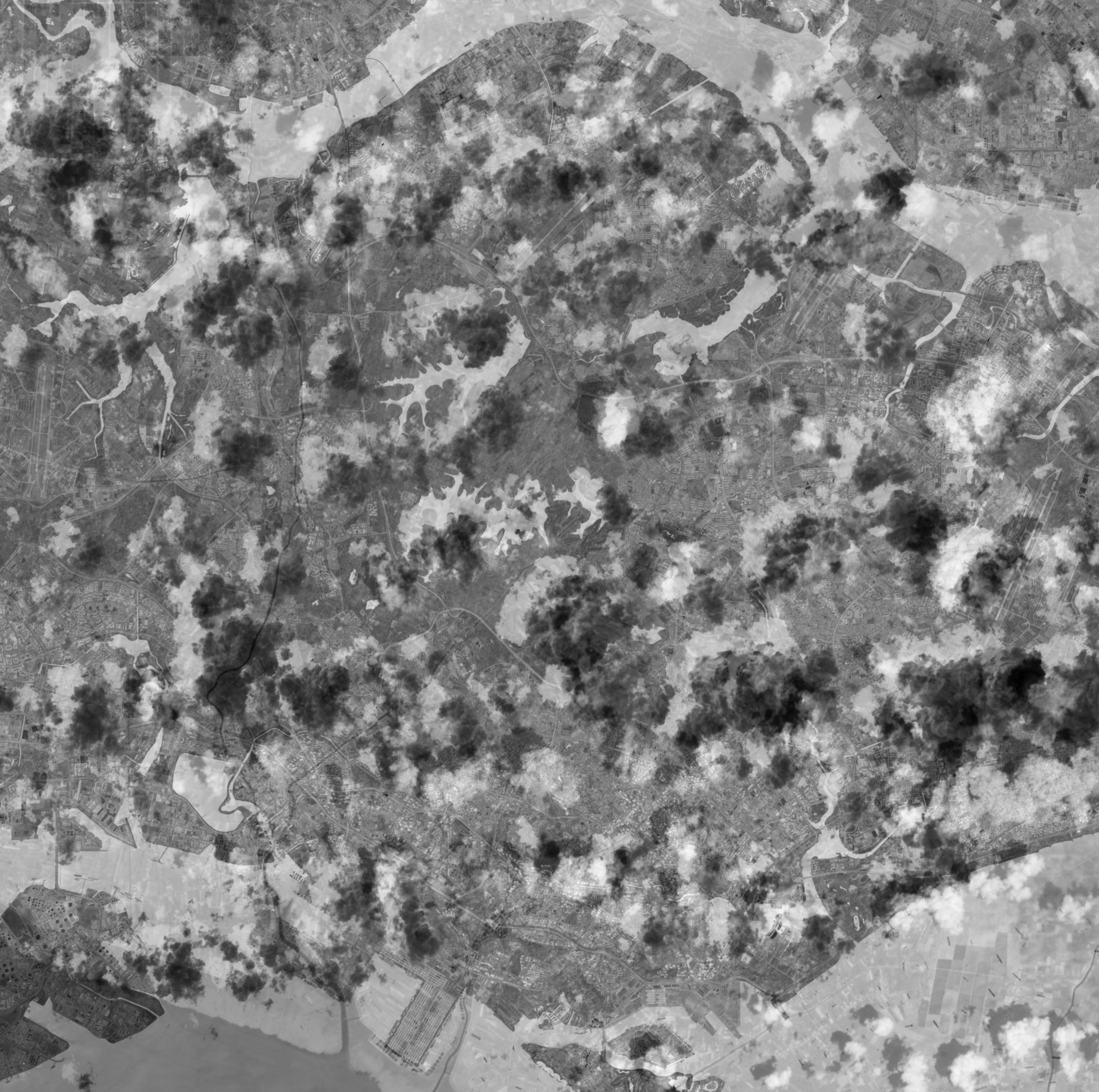
NDBI — greyscale (index values)
NDBI CSV Values
| min | max | mean | median | stddev |
|---|---|---|---|---|
| -0.840103030204773 | 0.7887728214263916 | -0.012865195982158184 | -0.04058040678501129 | 0.2629511058330536 |
NDVI − NDBI & Heat Risk
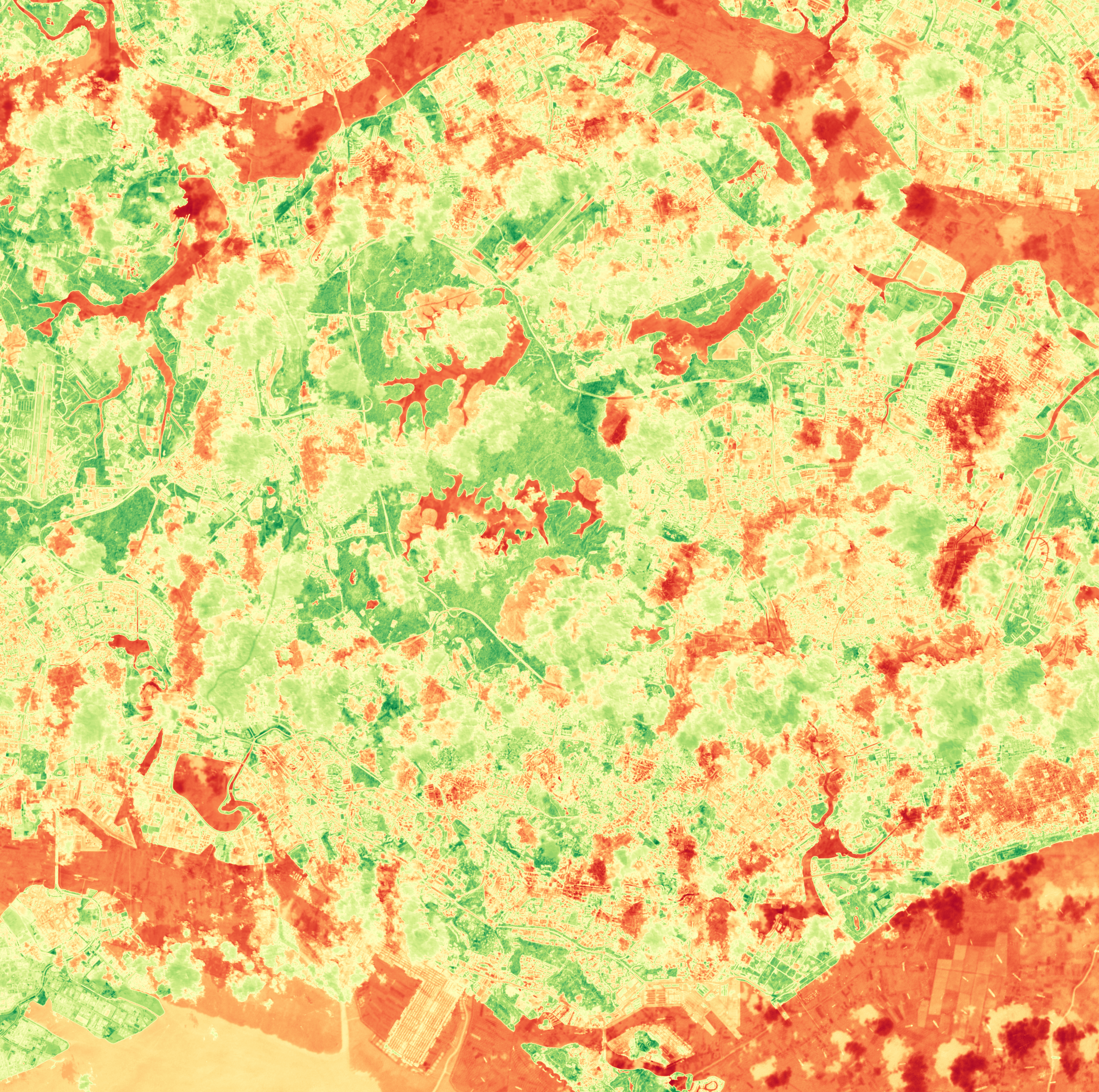
Difference visualization — highlights vegetation vs built-up dominance.

Heat risk interpretation derived from NDVI–NDBI difference.
The NDVI values range from a minimum of -0.433 to a maximum of 0.699, with an average of 0.152 and a median of 0.087. This spread indicates varying levels of vegetation cover across the region, with the average NDVI suggesting moderate tree and vegetation presence (see ndvi_color.png).
NDBI values show a minimum of -0.840 and a maximum of 0.789, with a mean of -0.013 and a median of -0.041. These figures suggest that while there are significant built-up areas (notably the positive maximum), the region overall leans more towards vegetation and open spaces (see ndbi_color.png).
Comparing NDVI and NDBI, the mean difference (NDBI - NDVI) is -0.165, indicating that vegetation predominates over built-up surfaces in the region. This dominance of vegetation is likely contributing to cooling effects across the area. The NDVI–NDBI difference map highlights zones where vegetation exceeds built-up surfaces, correlating with likely cooling effects, whereas areas where built-up surfaces surpass vegetation are flagged for higher heat risk (see ndvi_ndbi_diff_color.png).
- Focus on preserving and expanding green spaces in areas where NDVI exceeds NDBI.
- Monitor and mitigate heat risks in built-up hotspots identified by the difference map.
- Encourage community engagement in local greening initiatives.
3D Renders (Rayshader & Rayrender)

Rayshader 3D visualization derived from NDVI height-extrusion
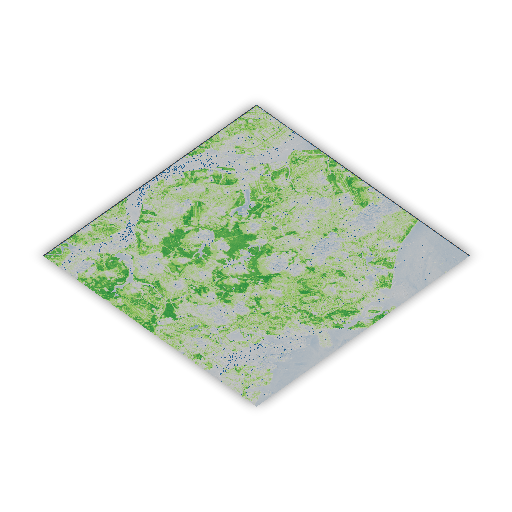
Rayrender 3D visualization derived from NDVI height-extrusion
Interactive NDVI overlay (zoom, pan, transparency). Use it alongside the static maps above.
Explore the interactive overlay (ndvi_map.html) to zoom in on specific areas, adjust layer transparency for better comparison, and validate features against high-resolution basemaps. Note that cloud cover, at 31.6%, may affect some readings. Immediate next steps include field validation of satellite observations and establishing a regular monitoring cadence to track changes over time.
Urban heat island effect
The analysis reveals that vegetation slightly predominates over built-up surfaces in the Singapore region, with a mean difference of -0.165. This vegetation dominance likely contributes to cooling effects, countering the urban heat island effect. Regular monitoring, coupled with community-driven greening projects, is recommended to maintain and enhance these cooling benefits. Call to action: Engage local communities in ongoing green space maintenance and expansion efforts.
Disclaimer: this analysis refers to the satellite crop / geo-bounds stored under the 'Singapore-region' folder (may include extended suburbs) and does not represent the full administrative limits of Singapore.
Get involved
Every dataset, image, and map here is part of a bigger mission — to connect people with the science behind urban greenery. If this work inspires you, there are more ways to explore and participate:
- Read our Urban Forestry Daily Digest — a quick way to stay updated on global green space insights and local restoration efforts.
- Explore the latest Melbourne NDVI Digest to see how vegetation trends compare across regions.
- Visit our feature article Urban Forestry and Green Living to understand how urban forests improve our health, climate, and community life.
Join us in sharing awareness, supporting greener city planning, and bringing data-driven stories of hope to light. Email: nature@ihugtrees.org
Have a place in mind you'd like us to study next?
Share the city or region name where you'd love to see an NDVI and NDBI analysis.
Alternatively, send us an email directly. We review every suggestion to understand where green monitoring can create the most impact.
References & Data
Free to Download (Please cite):
I Hug Trees NDVI Data Citation:
The NDVI and NDBI GeoTIFF and images are provided by I Hug Trees for scientific purposes. Please cite as:
@misc{ihugtrees_ndvi_2025,
author = {I Hug Trees},
title = {NDVI and NDBI Analysis Data - Chennai region 2025},
year = 2025,
note = {GeoTIFF and images provided for scientific purposes},
url = {https://ihugtrees.org}
}
Microsoft Planetary Computer Citation
If the Planetary Computer is useful for your work, please cite it using this record on Zenodo:
@software{microsoft_open_source_2022_7261897,
author = {Microsoft Open Source and
Matt McFarland and
Rob Emanuele and
Dan Morris and
Tom Augspurger},
title = {microsoft/PlanetaryComputer: October 2022},
month = oct,
year = 2022,
publisher = {Zenodo},
version = {2022.10.28},
doi = {10.5281/zenodo.7261897},
url = {https://doi.org/10.5281/zenodo.7261897}
}